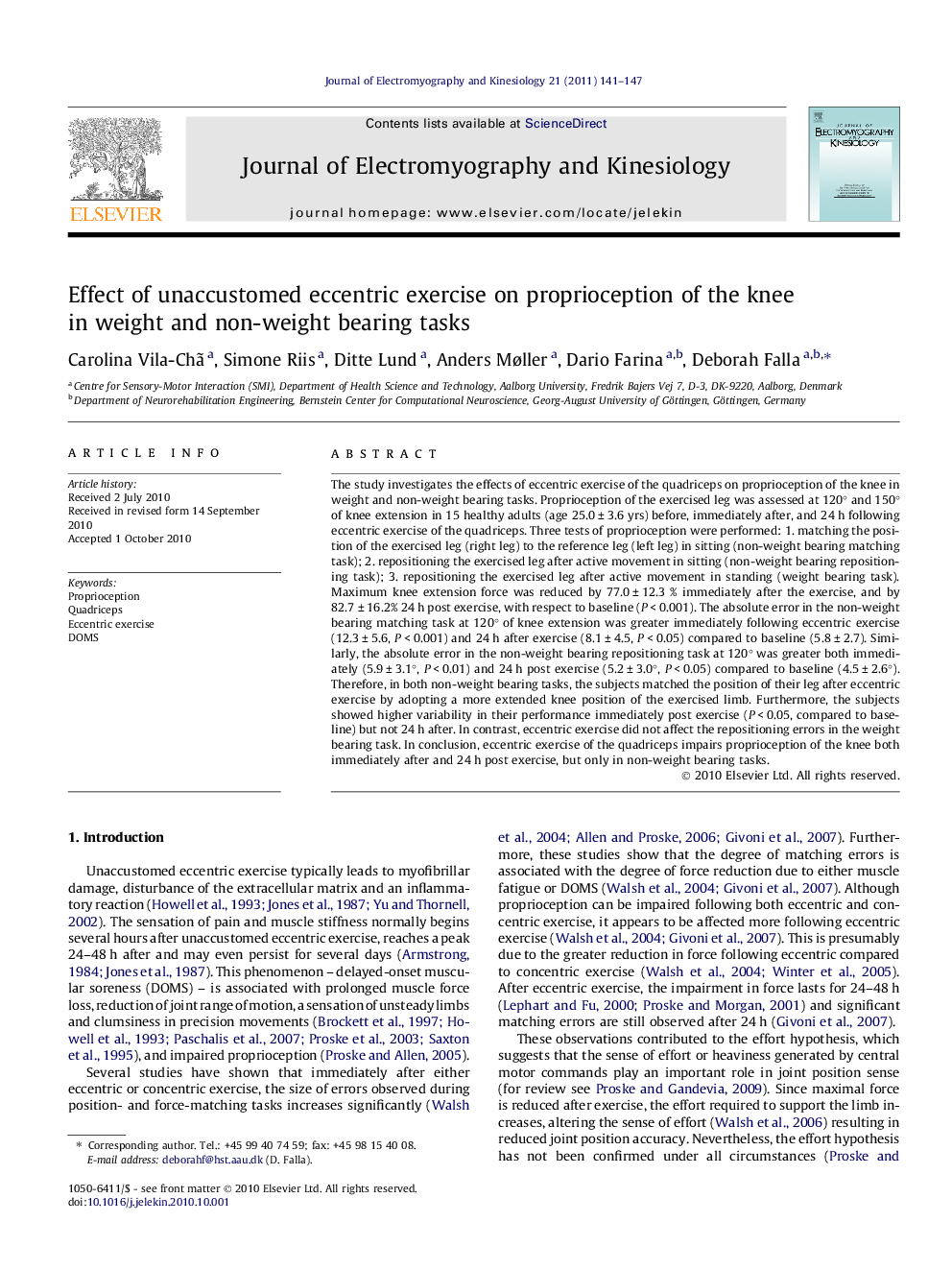| Article ID | Journal | Published Year | Pages | File Type |
|---|---|---|---|---|
| 4065107 | Journal of Electromyography and Kinesiology | 2011 | 7 Pages |
The study investigates the effects of eccentric exercise of the quadriceps on proprioception of the knee in weight and non-weight bearing tasks. Proprioception of the exercised leg was assessed at 120° and 150° of knee extension in 15 healthy adults (age 25.0 ± 3.6 yrs) before, immediately after, and 24 h following eccentric exercise of the quadriceps. Three tests of proprioception were performed: 1. matching the position of the exercised leg (right leg) to the reference leg (left leg) in sitting (non-weight bearing matching task); 2. repositioning the exercised leg after active movement in sitting (non-weight bearing repositioning task); 3. repositioning the exercised leg after active movement in standing (weight bearing task). Maximum knee extension force was reduced by 77.0 ± 12.3 % immediately after the exercise, and by 82.7 ± 16.2% 24 h post exercise, with respect to baseline (P < 0.001). The absolute error in the non-weight bearing matching task at 120° of knee extension was greater immediately following eccentric exercise (12.3 ± 5.6, P < 0.001) and 24 h after exercise (8.1 ± 4.5, P < 0.05) compared to baseline (5.8 ± 2.7). Similarly, the absolute error in the non-weight bearing repositioning task at 120° was greater both immediately (5.9 ± 3.1°, P < 0.01) and 24 h post exercise (5.2 ± 3.0°, P < 0.05) compared to baseline (4.5 ± 2.6°). Therefore, in both non-weight bearing tasks, the subjects matched the position of their leg after eccentric exercise by adopting a more extended knee position of the exercised limb. Furthermore, the subjects showed higher variability in their performance immediately post exercise (P < 0.05, compared to baseline) but not 24 h after. In contrast, eccentric exercise did not affect the repositioning errors in the weight bearing task. In conclusion, eccentric exercise of the quadriceps impairs proprioception of the knee both immediately after and 24 h post exercise, but only in non-weight bearing tasks.
